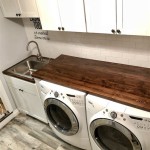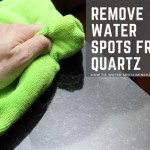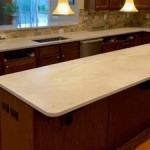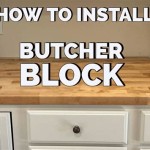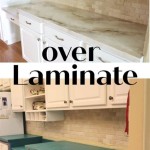Skim Coat Countertops With Concrete
Concrete countertops offer a unique blend of durability, design flexibility, and affordability. One popular method for achieving a smooth, polished concrete countertop surface is through skim coating. This process involves applying a thin layer of concrete over an existing substrate, effectively resurfacing it and creating a new, customizable countertop.
Key Considerations Before Skim Coating
Several factors should be considered before embarking on a concrete skim coating project:
- Substrate Compatibility: The existing countertop surface must be structurally sound and compatible with the concrete overlay. Suitable substrates include plywood, MDF, and even existing tile countertops.
- Preparation: Proper preparation is crucial for successful skim coating. This typically involves cleaning, degreasing, and potentially roughening the existing surface to ensure proper adhesion.
- Concrete Mix: Choosing the right concrete mix is essential. Options include pre-mixed concrete patching compounds, or custom mixes designed specifically for countertops, often incorporating polymers for enhanced strength and workability.
- Skill Level: While skim coating can be a DIY project, it requires patience, attention to detail, and some familiarity with concrete work. For complex designs or large projects, professional installation might be preferable.
Preparing the Existing Countertop
Thorough preparation is the foundation of a successful skim coat. Inadequate preparation can lead to adhesion problems, cracking, and an uneven finish.
- Cleaning: The existing surface must be thoroughly cleaned to remove any grease, oil, dust, or debris. A degreaser may be necessary for particularly greasy surfaces.
- Repairs: Any cracks or damage in the existing countertop should be repaired before skim coating.
- Roughening: A roughened surface provides better mechanical adhesion for the concrete overlay. This can be achieved by sanding, grinding, or applying a bonding agent.
- Protection: Surrounding areas, such as cabinets and walls, should be protected with masking tape and plastic sheeting to prevent damage from concrete splatter.
Mixing and Applying the Concrete Skim Coat
The concrete mix should be prepared according to the manufacturer's instructions, achieving a consistency that is spreadable but not too runny.
- Mixing: Use a clean container and appropriate mixing tools to ensure a homogenous mixture.
- Application: The concrete is applied using a trowel, working in manageable sections. A thin, even layer is crucial for a smooth finish.
- Multiple Coats: For thicker overlays, multiple thin coats are preferable to a single thick coat to minimize cracking.
- Working Time: Concrete has a limited working time, so it's essential to work efficiently and avoid overworking the material.
Finishing the Concrete Skim Coat
Once the concrete has begun to set, the surface can be finished to achieve the desired look.
- Smoothing: A steel trowel is used to smooth out any imperfections and create a level surface.
- Edge Detailing: Edge forms can be used to create rounded or beveled edges.
- Texturing (Optional): Various techniques can be used to add texture to the concrete surface, such as combing, stamping, or stenciling.
Curing and Sealing
Proper curing is essential for the concrete to achieve its full strength and durability.
- Curing Time: The concrete should be allowed to cure for several days, keeping it moist to prevent premature drying and cracking. This can be achieved by covering the surface with plastic sheeting or damp burlap.
- Sealing: Once the concrete is fully cured, a sealer is applied to protect it from stains, moisture, and other damage. Various sealer options are available, offering different levels of sheen and protection.
Maintenance and Care
Proper maintenance will help extend the life and beauty of the skim coated concrete countertop.
- Cleaning: Regular cleaning with a mild soap and water solution is recommended.
- Avoid Abrasives: Harsh abrasive cleaners and scouring pads should be avoided as they can scratch the surface.
- Resealing: The sealer may need to be reapplied periodically, depending on the type of sealer used and the level of wear and tear.
Troubleshooting Common Issues
Some common issues that can arise during the skim coating process include:
- Cracking: Cracking can occur due to improper mixing, rapid drying, or excessive thickness. Proper preparation, mixing, and curing are essential to minimize cracking.
- Delamination: Delamination, or the separation of the skim coat from the substrate, can be caused by inadequate surface preparation or incompatible materials.
- Uneven Finish: An uneven finish can result from inconsistent application or improper troweling techniques.

How To Diy Concrete Countertops Over Old Laminate Bless Er House

Concrete Countertop Diy A Beautiful Mess

Skim Coat Concrete Counters Over Old Laminate The Crazy Craft Lady

One Room Challenge Week 4 Diy Skim Coated Concrete Counters Land Of Laurel

Diy Concrete Over Laminate Countertops Using Feather Finish

Diy Concrete Counters Over Old Laminate
Concrete Countertop Diy A Beautiful Mess

Our New Concrete Counters Ardex Skim Coat Applied Over Laminate

How To Diy Ardex Concrete Counters Young House Love

Diy Concrete Countertop Reviews Remodelaholic
See Also


